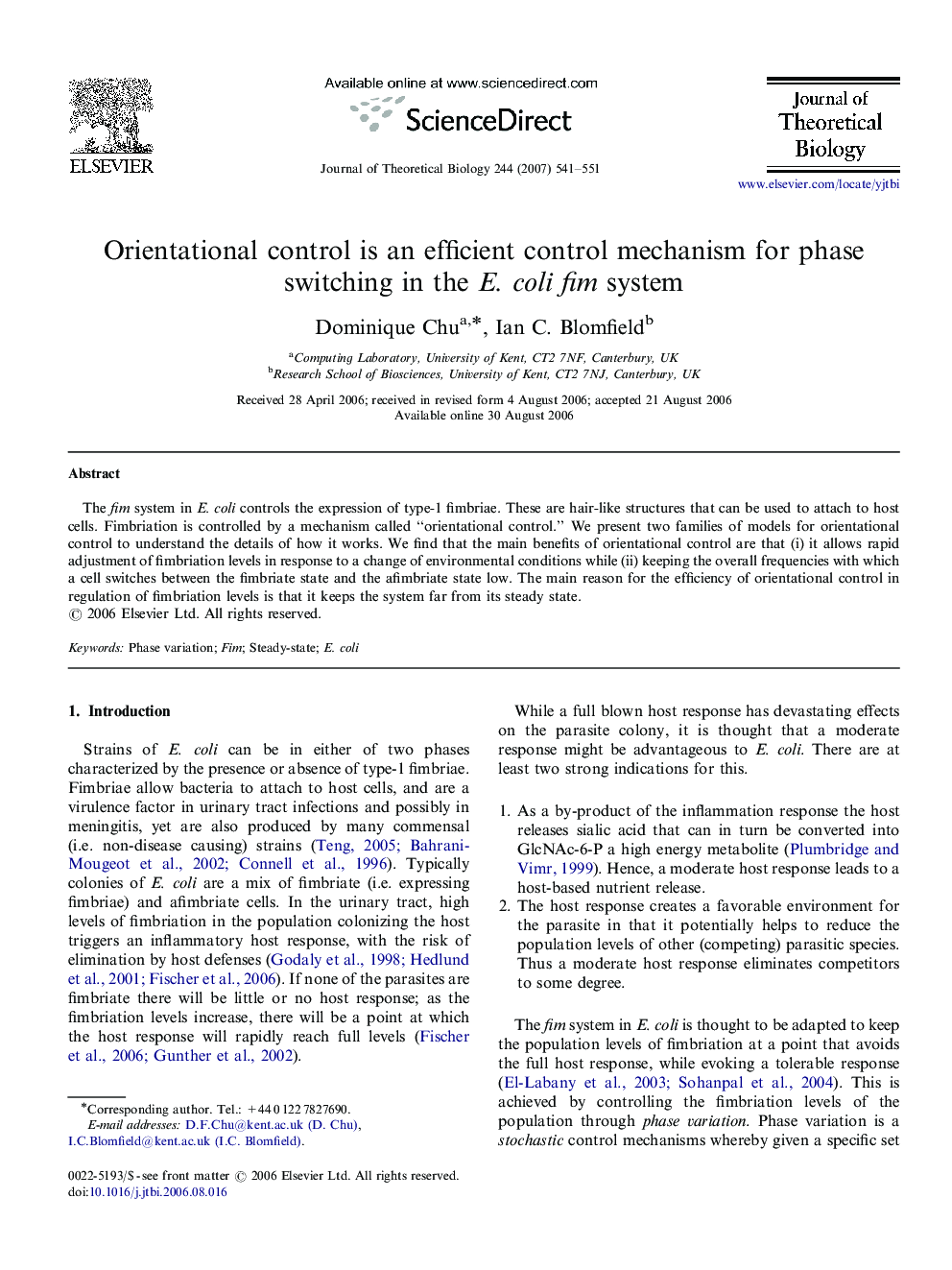| Article ID | Journal | Published Year | Pages | File Type |
|---|---|---|---|---|
| 4499262 | Journal of Theoretical Biology | 2007 | 11 Pages |
Abstract
The fim system in E. coli controls the expression of type-1 fimbriae. These are hair-like structures that can be used to attach to host cells. Fimbriation is controlled by a mechanism called “orientational control.” We present two families of models for orientational control to understand the details of how it works. We find that the main benefits of orientational control are that (i) it allows rapid adjustment of fimbriation levels in response to a change of environmental conditions while (ii) keeping the overall frequencies with which a cell switches between the fimbriate state and the afimbriate state low. The main reason for the efficiency of orientational control in regulation of fimbriation levels is that it keeps the system far from its steady state.
Related Topics
Life Sciences
Agricultural and Biological Sciences
Agricultural and Biological Sciences (General)
Authors
Dominique Chu, Ian C. Blomfield,
